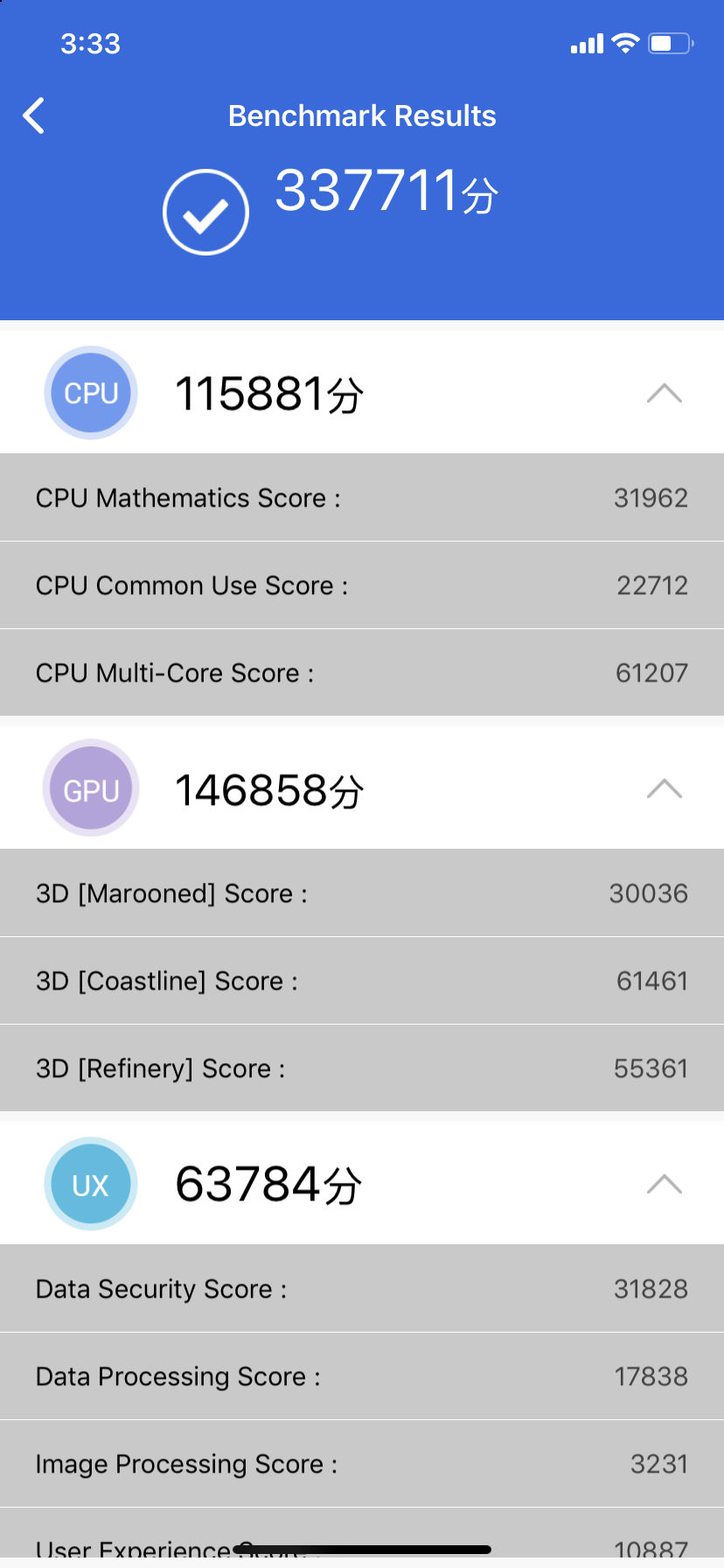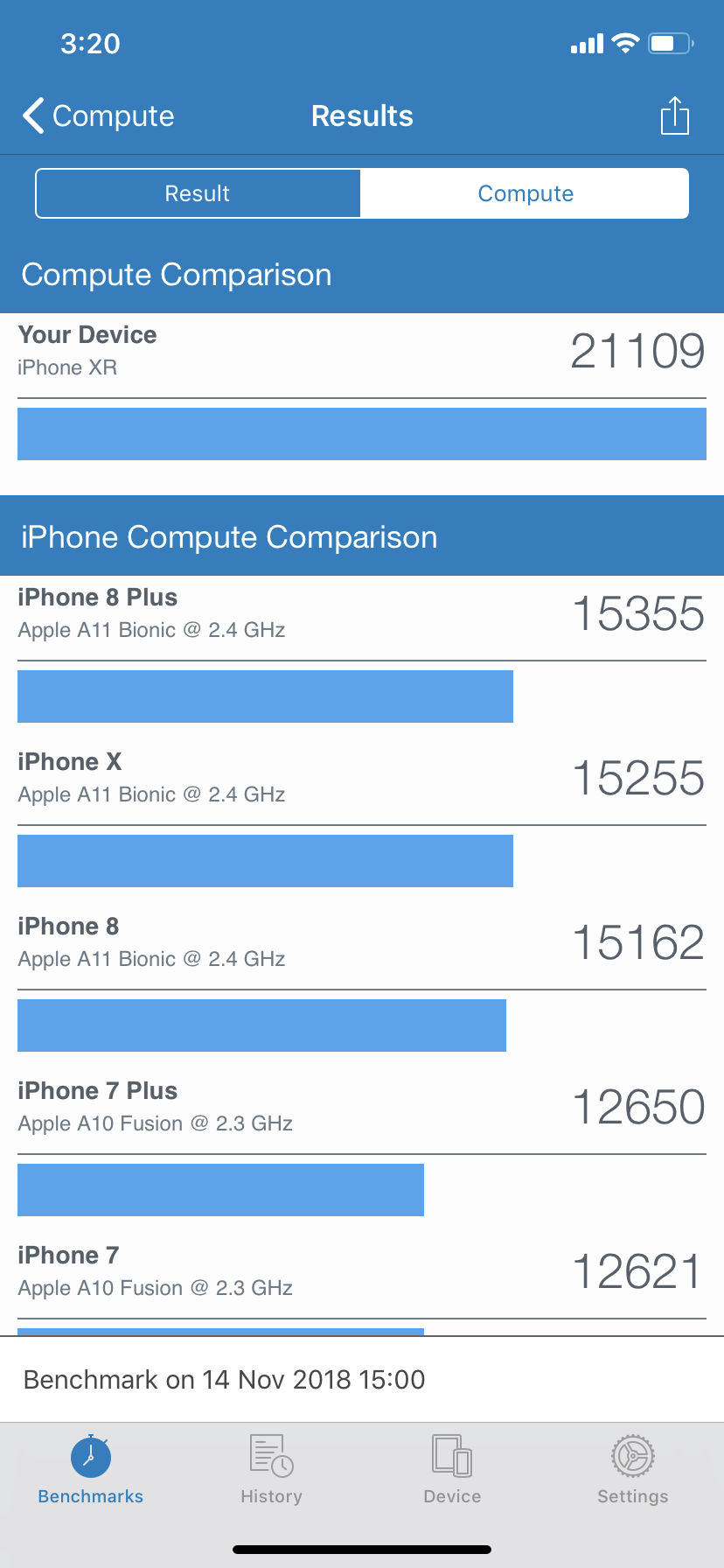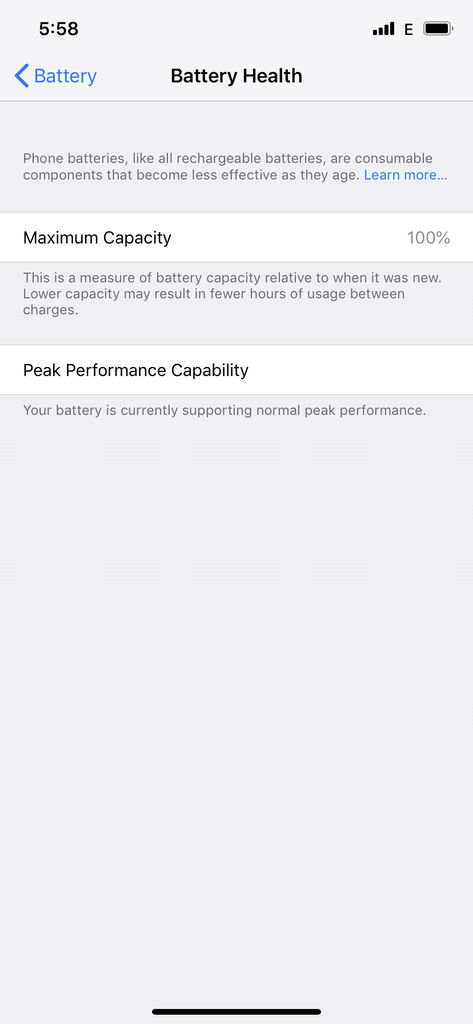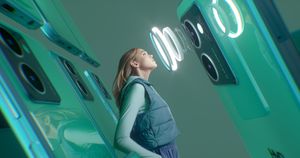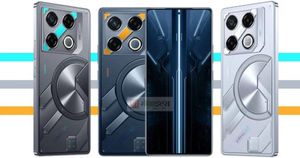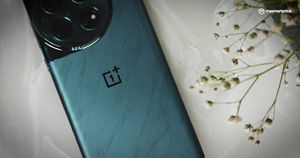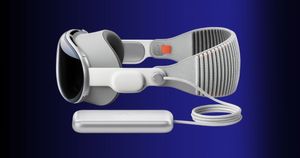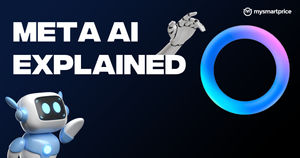
When Apple first announced that it was launching a relatively cheaper variant of the iPhone, my initial thoughts went straight to the days of the iPhone C. With an LCD screen and single rear camera on the iPhone XR, it really did look like Apple was going to offer a significant downgrade when compared to the other two pricier offerings. However, I was admittedly curious when it was revealed that the more affordable phone would offer the same processing capabilities along with claims of a better battery backup.
Apple iPhone XR
Rs. 76,900What Is Good?
- Exceptional performance.
- Wonderful battery backup.
- Solid build with various color options to choose from.
- Dual-SIM support.
- One of the best LCDs on a smartphone.
What Is Bad?
- Headphone jack dongle and fast charger are not included in the box.
- Portrait mode only works on people.
- LCD screen cannot compete with OLEDs.
Could Apple really be offering a reasonable deal here? And even if this is true, can this handset keep up with similarly priced adversaries running Google’s Android OS?
I took the iPhone XR 128GB model for a full test run over a two-week testing period, and here is my full review.
[P_REVIEW post_id=132259 visual=’full’]
iPhone XR Design, Build
It was a breath of fresh air to know that the iPhone XR lineup will be offering a plethora of color options to choose from. While you will be able to pick the standard White and Black models, there are also the Blue, Yellow, Coral and Product Red variants thrown in. For this review, I used the Yellow model. While not my favorite, I did end up enjoying my time using a unique colored handset which turned a lot of heads each time I whipped it out in public.
I appreciate the matte finish of the iPhone XR’s rear panel which hides fingerprints quite well. The iPhone XS and iPhone XS Max with their glossy back panels, on the other hand, are more susceptible to smudges. Also, the aluminum frame of the XR is less likely to scratch, while the same cannot be said for the other two’s stainless-steel frames. Even though Apple says the iPhone XR’s back is not as strong as its siblings, I wasn’t too concerned as the phone feels just as sturdy regardless.
The in-hand experience of holding the iPhone XR isn’t that different from the iPhone XS even if it is a tad bigger. The iPhone XS Max’s larger demeanor is more substantial. Overall, I found the iPhone XR to be just right with regards to its size and ergonomics. Furthermore, support for wireless charging, and an IP67 water resistance rating are welcome additions.
With all this said, I do have a few gripes. The first is with the rear camera lens which protrudes out the back panel well more than acceptable. This not only results in considerable wobble when placed on a flat surface but is also likely to be the first thing that will get damaged if the phone falls on its back. The glass lens isn’t even recessed within the metallic protrusion, meaning the lens is even more susceptible to scratches.
The other issue I had was with how chunkier the bezels are compared to those of the iPhone XS models. While the ‘bezel-less’ aspect will be a welcome change for those moving over from an iPhone 8 or older, a user of any other iPhone X series device will immediately notice the added thickness. Then we have the infamous notch making a comeback. The notch on the XR is about the same size as the other iPhone X devices, but the larger bezel makes the notch look bigger as well.
iPhone XR Display
gear/image/upload/q_100/v1542637731/Apple_iPhone_XR_Review_14_svj4no.jpg” width=”5479″ height=”3653″ />
The fact that the iPhone XR comes with a smaller resolution panel than the iPhone XS and XS Max seemed to be the only thing anyone could talk about ever since the launch. Does the decrease in pixel count compromise the display quality? It turns out, not really. The thing is, the iPhone XR offers a resolution of 828×1792 pixels within its 6.1-inch LCD panel. This brings the pixel density up to 326ppi as opposed to the XS models which boast pixel densities of 458ppi. However, the pixel density is so high that it doesn’t make much of a difference to the overall output on the XR. The image is sharp enough, with colors being quite vibrant.
The aspect that indeed makes a difference here is the use of an LCD panel instead of OLED. Put the iPhone XR up against any other iPhone X model and the quality difference is undeniable. The colors are punchier, and blacks are deeper on pretty much every single OLED phone we compared the XR with. This isn’t to say that the iPhone XR’s display is bad in any way. As far as LCDs are concerned, this screen is pretty good. The black levels are decent, with color accuracy and coverage being just as impressive. Outdoor legibility is also completely satisfactory, as is the case with any iPhone model in the past. But it just doesn’t stack up against OLEDs that can be found on even on considerably lower priced smartphones.
There is also the matter of 3D touch being omitted from the iPhone XR. But then again, most iPhone users I’ve asked said they did not use that feature all too much anyway. Also, Apple is attempting to compensate by offering Haptic Touch as a replacement. This basically provides haptic feedback when you long press certain icons such as the camera and torch launchers on the lock screen. While not a complete substitute, this does get the job done in most places.
iPhone XR Camera
Apple has used the same primary camera sensors on the iPhone XR as the XS models. The front holds a 7MP, f/2.2 sensor for selfies. The back of the device, on the other hand, only comes with a single 12MP wide angle with an f/2.4 aperture. The telephoto lens found on the XS devices has been excluded from the XR. It turns out, this exclusion doesn’t really hamper the camera capabilities all that much.
Both cameras perform quite well on their own. Images taken in brightly lit conditions are well detailed with decent colors. Portrait mode also works admirably on both sensors even though none utilize any hardware processing for the blur effects. Auto HDR still works just as good as it does on older iPhones. 4K video recording with the rear camera is also possible. The resulting videos are quite stable thanks to OIS. Details are sharp, and the accuracy of autofocus is impressive.
Low-light photography was a hit and miss on the XR though. With the rear camera, I was sometimes able to capture details in dark environments which I could not properly see with my own eyes. But on using the front shooter, most images were usually quite blurry and noisy. Where smartphones like Huawei P20 Pro, OnePlus 6T, Pixel 3 and Samsung Note 9 offer their own versions of night modes that work superbly, Apple still has some catching up to do in this regard.
Comparing the rear camera of the iPhone XR side by side with that of the iPhone XS does reveal some more shortcomings of the former. Not having a telephoto lens for one, does limit the amount of zoom you can achieve before losing out on details. The resulting image generally ends up with considerable noise and artifacts.
Portrait mode on the rear cameras of these phones also produces noticeably different end results. The iPhone XR captures more background since it only has the wide-angle lens to work with. The XS, on the other hand, relies on the telephoto lens which results in a lesser field of view. But then again, the XS took a slightly more vibrant image and achieved better edge detection in the example shot above.
There is also the fact that portrait mode on the iPhone XR only works if it detects a human in the frame. This means you won’t be able to grab bokeh shots of inanimate objects like food, vehicles, and even your pets.
In the end, the cameras on the iPhone XR did not blow me away, especially considering how expensive the phone is on its own. More affordable Android smartphones can achieve better photography. You could spend about the same on a Pixel 3 device and get better edge detection and restriction-free portrait modes with its single rear lens. If ultimate photography is your primary concern, a 2018 iPhone might not be the best option for your money.
iPhone XR Performance
The best part about the iPhone XR is that it is powered by the same A12 Bionic chipset as its pricier counterparts. Apple could have just as easily slipped in its last-gen chipset seeing how this is supposed to be a lower-priced option. I’m glad this isn’t the case, and that we get to enjoy the full capabilities of this 7-nanometer chip. Even though the XR comes with 3GB of RAM compared to the 4GB of the XS models, there are barely any differences in both real-world use and benchmark scores. In fact, since the XR needs to drive comparatively lesser number of pixels than the XS variants, the frame rates and GPU scores were better on the XR in most of our tests.
Since there are exhaustive lists of all the functionalities iOS 12 brings forth on the new iPhone models, I won’t go too much in depth here. Other than the slight change in how the aforementioned Haptic Touch feature works in place of 3D touch on the iPhone XR, the software experience is about the same as the other iPhone X models. You get to play around with Memojis on this phone, which can be fun if you are into that sort of thing. Furthermore, there are nifty AR functionalities here as well. While I’m not entirely sold on the implementation of AR on smartphones today, there is still time for more practical and intuitive uses for the technology to arrive in the future.
For the first time, Apple is offering dual-SIM support on an iPhone. While it is a bit of a hassle to get an eSIM activated by a compatible operator in India (only Airtel and Jio as of now), users who rely on two phone numbers will be very pleased.
The speakers on the iPhone XR are one of the best I have heard on a smartphone. On comparing with an iPhone 8 Plus, the iPhone XR’s stereo setup was significantly louder and clearer. But Apple had to ruin the fun by excluding the 3.5mm to Lighting adapter for headphones from the box. I was immensely disappointed by this decision as I hate using the included EarPods as they just don’t fit all too well in my ears. Even if you feel differently, Apple should have provided the dongle for those of us who wish to use other wired headsets.
With the iPhone XR, Apple also cements the fact that Touch ID is gone for good. Face ID is the primary security feature moving forward. Apple does seem to have improved this tech on the iPhone XR, with authentication being faster and more accurate even at weird angles. I personally would still prefer to use a fingerprint scanner though, as it is more intuitive to have the screen already unlocked before I bring it up to my face. The iPhone XR does come with ‘lift to wake’ and ‘tap to wake’ features. However, moving around with the phone in my hand would frequently lead to missed face scans which would disable Face ID and require me to enter my passcode. Getting Face ID to work properly in bed was another issue as it would usually be too close to my face to get an accurate scan.
iPhone XR Battery Life
The battery is another aspect of the iPhone XR which surprised me. No matter how hard I pushed the phone, I always had juice left in the XR’s tank by the end of the day. Apple says this handset’s 2942mAh battery is 1.5 times better than the iPhone 8 Plus. After my time with the phone, I don’t doubt this claim. On average, I was able to get a day and a half of usage out of the XR easily. In fact, on lighter than usual use, I was able to make the phone last a full 48 hours before needing to charge the phone. Average screen-on-time for me was in the neighborhood of 6 to 7 hours.
The fact that Apple decided to include wireless charging on its most affordable smartphone is a testament to its intentions of entering a truly wireless era. However, providing a measly 5W charger while all other phone manufacturers ship their flagships with fast charging bricks is a frustrating ordeal. Investing in a higher wattage charger is a mandate if you want to fast charge your iPhone XR.
Should You Buy The iPhone XR?
With the release of the iPhone XR, Apple has provided a smartphone that still feels like a real upgrade despite being priced considerably lower than its siblings. Admittedly, there are a few comprises here when compared to its pricier counterparts, the most obvious of these being the lower resolution display and absence of a telephoto lens at the back. However, the amazing battery, unmatched performance, ideal form factor, and dual-SIM support make it a formidable contender.
I have no qualms in saying that the XR is the more sensible option between the three iPhones that came out this year. While the XS models will provide the very best Apple has to offer, the XR lets you enjoy pretty much all the most important of these functionalities in an attractive looking, lower-priced package without having to sacrifice too much. If you are on last year’s iPhone X and were thinking about upgrading, then I will advise you to stick to it for a while longer. You still get a telephoto lens on the X, along with a superior OLED screen. If you are on an iPhone 8 Plus or older, the XR will be the perfect upgrade for you.
With that said, the cynic in me still can’t overlook how the iPhone XR is still a very expensive handset. There is no doubt that better hardware can be found on Android devices that are priced similarly, or even considerably lower — the Samsung Galaxy Note 9 (review) and the Google Pixel 3 XL (review) being a few such offerings. While the iPhone XR might be the most sensible iPhone Apple has made this year, it certainly isn’t the most sensible smartphone one can buy.


























